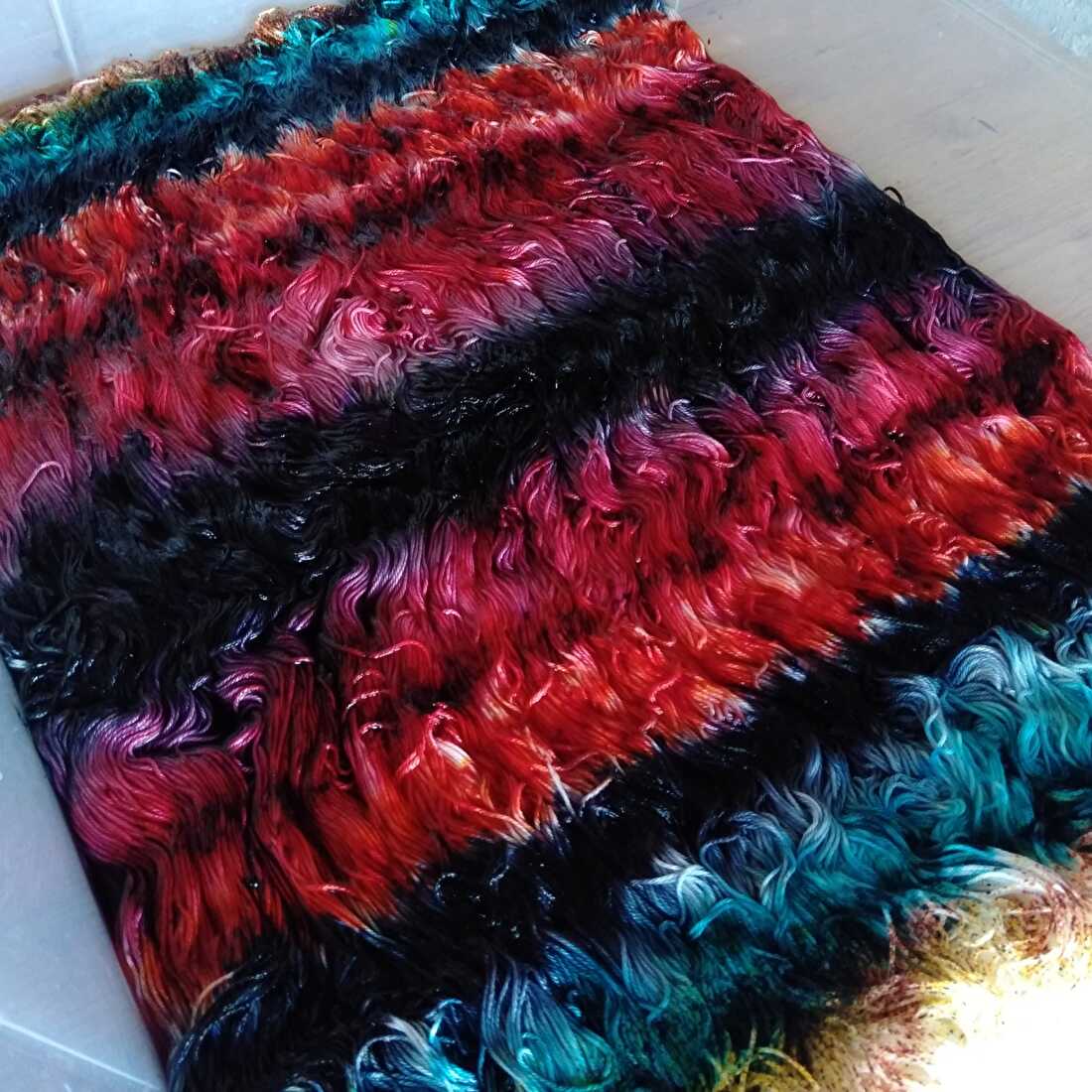The yarn dyeing process
When dyeing cotton, it is important to create a perfect bath with the correct pH value. That pH value is important, because it ensures that the cotton absorbs the dye at its best. To get the correct value, I use a 99.9% pure soda. I then apply the dye to the cotton and let the yarn sit for 24-36 hours. To dye the yarn, I use Procion fiber reactive dyes: it contains no toxic substances, is broken down by bacteria in water and is therefore not harmful to the environment. When the dye has 'striked', the process of rinsing and drying begins. For rinsing I use clean rainwater: apart from the fact that this is sustainable, rainwater hardly contains calcium, which improves the softness of the yarn. An old-fashioned centrifuge plays a starring role in the dyeing process. Because the dye is squeezed out, I don't have to rinse as often, which means much less water is used. I spent about three days on dyeing my yarn, from start to finish before a skein is ready to be shipped.
has 'striked', the process of rinsing and drying begins. For rinsing I use clean rainwater: apart from the fact that this is sustainable, rainwater hardly contains calcium, which improves the softness of the yarn. An old-fashioned centrifuge plays a starring role in the dyeing process. Because the dye is squeezed out, I don't have to rinse as often, which means much less water is used. I spent about three days on dyeing my yarn, from start to finish before a skein is ready to be shipped.
Procion dyes are available in every imaginable colour, but they all start with red, yellow and blue. I choose to mix the colors myself, in order to have full control over the final result. It can be tricky: you might think that with equal parts yellow and blue you'll get a medium green, but that's not the case. The pigments of blue are way stronger than yellow, so you will have to use much more yellow or way less blue dye, to get to medium green. But nevertherless it's great to experiment with just three primary colors!
To be able to repeat colors you must meticulously keep a recipe, accurate to the gram and millilitre. Sometimes I just feel like following my inspiration and not writing anything down, resulting in yarn that won't be dyed again. One of a kind beauties, that can't be repeated. Please check 'm out here.







